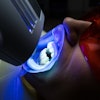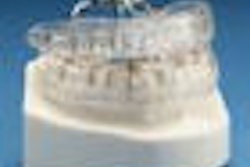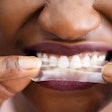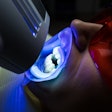The ratio between tongue volume and bony enclosure size in patients with obstructive sleep apnea (OSA) may help dentists calculate oral appliance treatment success, according to research presented at the American Academy of Dental Sleep Medicine annual meeting in San Antonio.
Although mandibular advancement splints (MAS) have been shown to be a safe and effective treatment for OSA, predicting efficacy in individual patients is problematic. The researchers assessed whether anatomical factors such as craniofacial size, upper-airway soft-tissue volume, and/or the anatomical balance between them, were associated with MAS treatment outcome.
The study included 49 OSA patients. Patients were at least 18 years of age and had mild to severe sleep apnea. They were without other sleep disorders or serious comorbid medical or psychiatric disorders.
Each patient was fitted for a custom, two-piece MAS that was worn during sleep. Treatment outcome was assessed by polysomnography after approximately six weeks of oral appliance therapy.
Of the 49 patients, 24 responded to the treatment, demonstrating an apnea-hypopnea index reduction of 50% or more. Body mass index and age did not differ between responders and nonresponders, but responders did have a lower baseline apnea-hypopnea index, indicating that their sleep apnea was less severe before treatment.
Tongue cross-sectional area (CSA) was measured in a subset of 28 patients, including 12 responders and 16 nonresponders. The measurements were taken using cephalometric soft-tissue imaging. Responders had a larger tongue CSA than nonresponders, but there was no difference in the bony oral enclosure CSA. The ratio of tongue to bony enclosure CSA significantly differed between responders and nonresponders, indicating the ratio as a significant predictor of response to treatment.
Because patients who responded to MAS treatment had a larger tongue volume for a given oral cavity size, the researchers suggested that determining this ratio may help predict MAS treatment success.
"While this study reaffirms the difficulties in predicting OSA treatment response to mandibular advancement splints, responders seem to have a larger tongue volume for a given oral cavity site, suggesting that MAS may help correct anatomical imbalances," said lead author Whitney Mostafiz, a student at the Harvard School of Dental Medicine.
Copyright © 2010 DrBicuspid.com



















